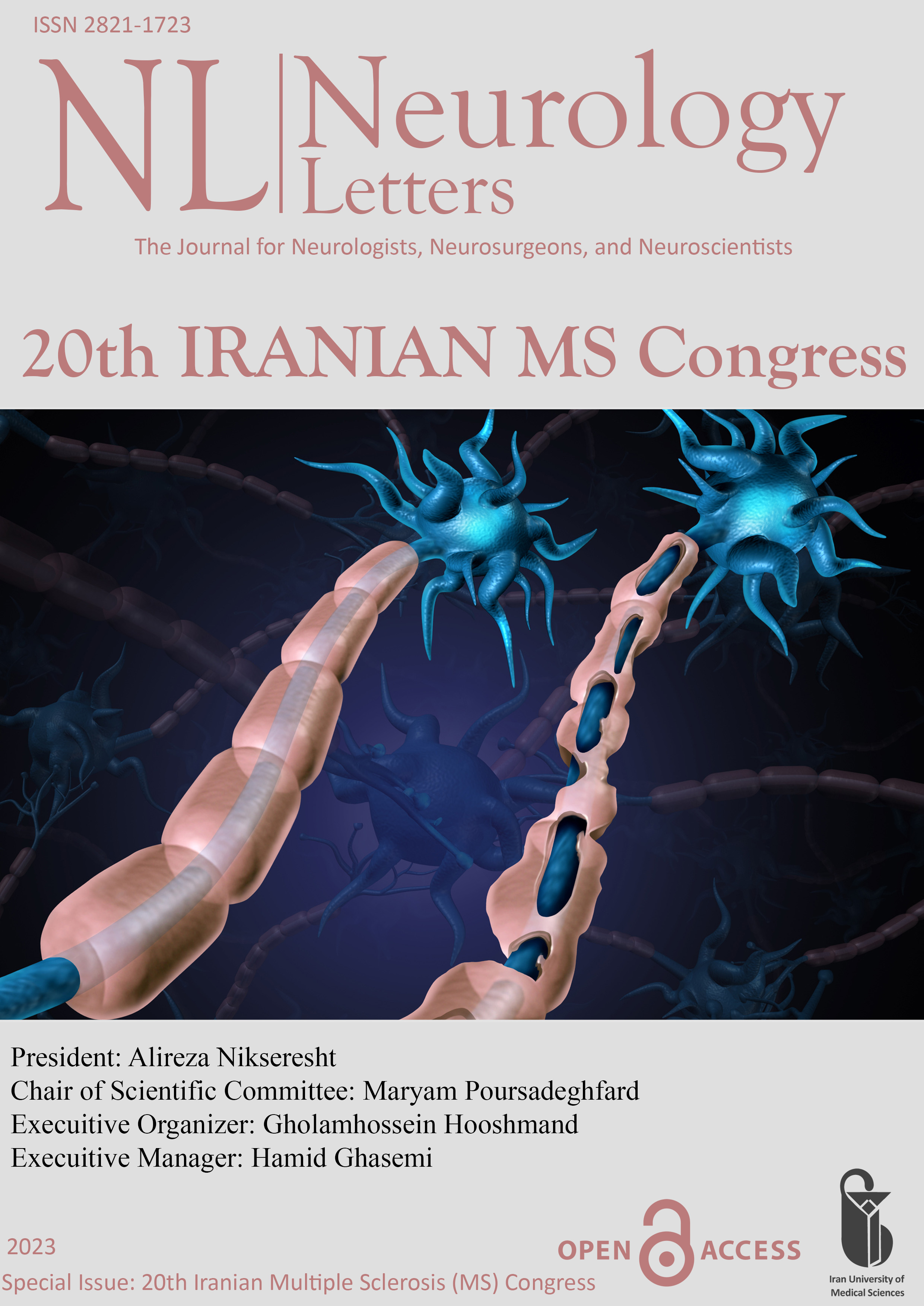System biology review of multiple sclerosis and discovery of drug targets (ORP-54)
Document Type : Oral Presentation
Author
.
Abstract
Summary: Multiple sclerosis (MS) is a chronic autoimmune disorder characterized by inflammatory-demyelinating events in the central nervous system. will be The aim of this study is to identify the genes and metabolic pathways effective in the disease using microarray data and to create gene interaction networks. The results of this study lead to the identification of the signaling pathway of TLRs, which are vital components of innate immunity and are used to identify and remove pathogen-associated molecular patterns (PAMPs) from bacteria, viruses and other pathogenic agents. Typical PAMPs are nucleic acids, including viral RNA and DNA. This issue indicates the microbial factors in the pathogenesis of the disease. MSRV (multiple sclerosis-associated retrovirus) belongs to the HERV-W family of human endogenous retroviruses. A protein derived from MSRV has been found in most patients with multiple sclerosis (MS). This protein (Env-ms) has pro-inflammatory properties for various types of immune cells and therefore could play a role in the pathogenesis of MS by promoting the leukocyte diapadesis observed in the central nervous system of patients. TLRs are also effective in directly regulating the activation and survival of T cells, and the imbalance of regulatory T cells in MS is one of the main symptoms of the disease at the molecular level. Considering that MSRV is a HERV, it can be hoped that CRISPR technology will eliminate the pathogen. On the other hand, TLRs, with emphasis on TLR4, as a molecule that initiates inflammation after encountering Env-ms and is responsible for disrupting the balance of T cells, is a potential therapeutic target.
Method: In this study, differential analysis of gene expression using GEO database data was used. The keyword used to search is Multiple Sclerosis. The number of reported studies based on Dataset and Supplementary file & CEL and Homo Sapience filters, 2434 cases were obtained, after reviewing the first 40 studies, 36 cases with Accession: GSE37750 were selected for expression analysis. The study conducted in GSE37750 on 9 multiple sclerosis patients with samples before and after treatment with IFN beta (2 samples for each patient, a total of 18 samples) and 8 healthy controls in this study included 26 samples. The analysis was done by R software by creating two groups, Normal and MS, respectively, with 4 healthy samples and 4 patient samples with the condition before treatment with IFN beta. The data obtained from the analysis included 50,000 items, which were reduced to 2927 items with Excel software based on Pvalue0.06 and saved in a new sheet with the name SIGDegs. The SIGDegs data was also stored in two tables larger than 0.6 with the name OVER and the number of data 1052 and smaller than -0.6 with the name Under and the number of data 1064 in a new sheet based on the value of LogFc. Over genes network obtained from STRING database using Cytoscape software based on Degree, Betweenness, Closeness filter and number of 100 genes were determined as HUB genes of the network. The Hubs of Over gene network obtained from the STRING database was sorted by Degree, Betweenness, Closeness using Gephi software, and the modules and clusters of the network were calculated and determined using Modularity Analysis. Hubs of over genes cluster obtained from Gephi was checked by Enrichr server and Pathways tab. The obtained results indicate that the excessive activity of the TLR signaling pathway disrupts the balance of immune cells effective in inflammation th1, th2, th17 and causes autoimmune effects of which MS is one of them.
Results: The data obtained from the study using the system biology method validates the results obtained from other studies. Excessive activity of Toll-like receptor signaling pathway can indicate the presence of a pathogen. According to the results obtained from [1], we show that Env-ms can stimulate several inflammatory parameters in an in vitro human BBB model, the HCMEC/D3 brain endothelial cell line. Furthermore, using a silencing approach with siRNAs, we show that Env-ms is recognized through Toll-like receptor 4, an innate immune pattern recognition receptor found in endothelial cells. We also show using functional methods that treatment of brain endothelial cells with Env-ms significantly stimulates the adhesion and migration of activated immune cells across the endothelial cell monolayer. These findings support the hypothesis that MSRV may play a role in the pathogenesis of MS or at least in maintaining an inflammatory condition, thus fueling the autoimmune disorder. MSRV can also play a role in other chronic inflammatory diseases. Interestingly, the proinflammatory and immunopathogenic effects of MSRV are achieved by its envelope protein (Env-ms) through the activation of Toll-like receptor (TLR) 4 and its receptor CD14. These results lead to the targeting of genome editing with the approach of removing MSRV genes by CRISPR technology. TLR4 could also be considered as a drug target as (2) loss of TLR4 in CD4+ T cells alone almost completely abrogates disease symptoms, mainly through reduction of Th17 and, to a lesser extent, Th1.
Keywords
 Neurology Letters
Neurology Letters
